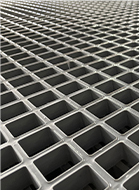loading...
- No. 9, Xingyuan South Street, Dongwaihuan Road, Zaoqiang County, Hengshui, Hebei, China
- admin@zjcomposites.com
- +86 15097380338
- Welcome to visit our website!
Innovative FRP Railing Solutions for Enhanced Safety and Aesthetic Appeal
Exploring the Benefits and Applications of FRP Railing Systems
In contemporary construction and architectural design, the integration of innovative materials has become paramount in achieving safety, durability, and aesthetic appeal. One such material that has gained significant attention in recent years is Fiber Reinforced Polymer (FRP). Among its many applications, FRP railings stand out as a highly effective solution for securing elevated surfaces and enhancing safety, particularly in commercial and industrial environments.
FRP railings are made from a composite material that combines a polymer matrix with fibers—typically glass, carbon, or aramid. This combination results in a lightweight yet robust material with exceptional strength-to-weight ratios. One of the most compelling advantages of FRP railings is their corrosion resistance. Unlike traditional materials such as steel and aluminum, FRP does not rust or corrode when exposed to harsh environmental conditions, such as salty air and moisture. This characteristic makes FRP railings an ideal choice for coastal areas or regions subject to frequent rainfall.
Exploring the Benefits and Applications of FRP Railing Systems
Safety is paramount in any construction project, and FRP railings excel in enhancing safety standards. Their design can be tailored to meet specific code requirements, ensuring compliance with local regulations. Additionally, the lightweight nature of FRP makes it easier to handle and install, reducing the risk of injury during the construction process. The non-slip surfaces of FRP railings provide further safety benefits, reducing the likelihood of accidents, particularly in areas prone to spills or moisture.
frp railing

Moreover, FRP railings offer a wide range of design possibilities. Available in various colors, textures, and finishes, they can be customized to complement the aesthetic goals of any project. Whether it’s a modern industrial complex or a scenic park, FRP railings can seamlessly integrate into the surrounding environment, enhancing the visual appeal of the space.
Furthermore, the sustainability aspect of FRP railings cannot be overlooked. As more builders and architects prioritize environmentally friendly materials, FRP emerges as a viable option due to its longevity and recyclability. Many FRP products are manufactured using recycled materials, contributing to a reduction in the carbon footprint associated with construction.
In terms of applications, FRP railings are versatile and can be used in a variety of settings. They are commonly found in industrial facilities, utility plants, bridges, pedestrian walkways, and residential properties. The ability to endure extreme conditions makes them particularly suited for environments where traditional materials would quickly deteriorate.
In conclusion, FRP railings represent a significant advancement in construction materials, offering a myriad of benefits including corrosion resistance, low maintenance, enhanced safety, design flexibility, and sustainability. As the industry continues to evolve and prioritize innovative solutions that meet the demands of modern infrastructure, the adoption of FRP railings is expected to grow. Whether for commercial, industrial, or residential applications, FRP railings provide a reliable and appealing solution for those looking to enhance safety and durability in their construction projects. Embracing this technology not only improves the integrity of structures but also contributes to a greener future in building design.
-
The Rise of FRP Profiles: Strong, Lightweight, and Built to LastNewsJul.14,2025
-
SMC Panel Tanks: A Modern Water Storage Solution for All EnvironmentsNewsJul.14,2025
-
GRP Grating: A Modern Solution for Safe and Durable Access SystemsNewsJul.14,2025
-
Galvanized Steel Water Tanks: Durable, Reliable, and Ready for UseNewsJul.14,2025
-
FRP Mini Mesh Grating: The Safer, Smarter Flooring SolutionNewsJul.14,2025
-
Exploring FRP Vessels: Durable Solutions for Modern Fluid HandlingNewsJul.14,2025
-
GRP Structures: The Future of Lightweight, High-Performance EngineeringNewsJun.20,2025
